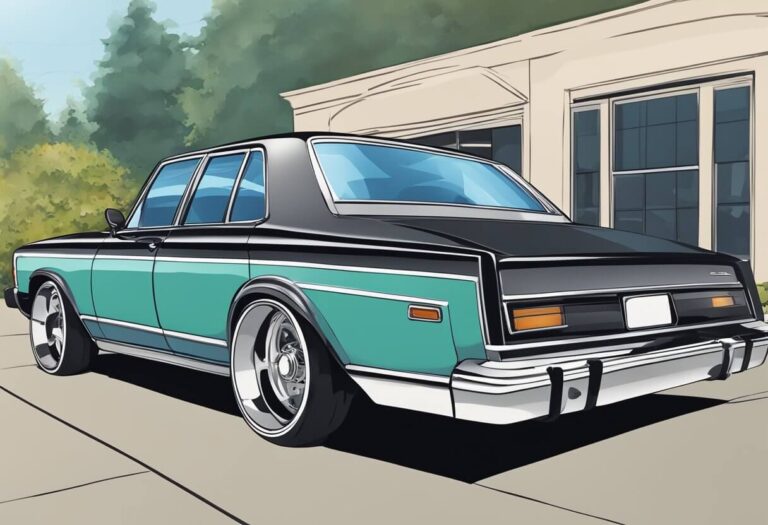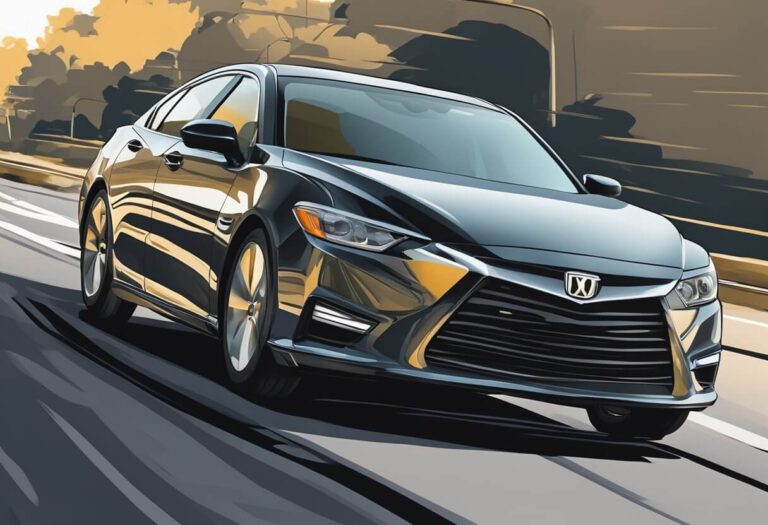Legal Window Tint in MD: Limits, Laws & Regulations

In Maryland, window tint laws regulate how dark you can legally tint your vehicle’s windows. But what are the specifics? This in-depth guide covers all the legal tint limits, additional regulations, exceptions, and penalties you need to know in the state.
Window tinting provides great benefits like UV protection, reduced heat and glare, increased privacy and vehicle security. However, going too dark can obstruct vision and create safety issues. That’s why Maryland and other states impose legal limits on tint darkness.
This post will outline the details on legal window tint levels for different vehicle types in Maryland. It also covers restricted tint colors, certifications required, exceptions allowed, penalties for violations, and more. Whether you’re considering tinting or already have treated windows, this is your comprehensive resource on staying legal.
Understanding Window Tint Laws in Maryland
Why Window Tint Laws Exist
While window tint offers many benefits, excessively dark tint raises two main concerns for lawmakers and law enforcement:
- Dangerously obstructed visibility for drivers, increasing accident risks.
- Tint so dark that vehicle occupants and activity inside are completely concealed from outside view.
To balance allowing reasonable tint with managing these safety factors, Maryland imposes legal limits on maximum tint darkness.
History of Maryland’s Window Tint Legislation
Maryland’s current window tint laws were first passed back in 1995. The regulations have evolved over time, with some changes made to legal tint levels and other requirements.
It’s important to stay up-to-date, as the state can update its statutes at any point. Checking the latest MD tint laws before having your windows treated is advisable.
Legal Tint Limits for Vehicles in Maryland

So what are the specific legal tinting limits in Maryland? The allowed tint darkness depends on the type of vehicle and window location.
Tint levels are measured using visible light transmission (VLT) percentage. This represents how much light can pass through the combination of window glass and tinting film.
For example, 35% VLT means 35% of light passes through, making it a relatively dark tint. Conversely, 70% VLT is quite light. Most new vehicles come with untinted windows around 70-75% VLT from the factory.
Passenger Cars (Sedans, Coupes, Convertibles)
Windshield: Only non-reflective 35% VLT tint is permitted on the top 5 inches of the windshield, known as the “windshield strip” area.
Front Windows: All front side windows (driver and passenger) must allow at least 35% VLT. Darker tint is not permitted.
Rear Windows/Backseat: Any rear windows behind the front seat, including rear side windows and rear windshield, must also allow at least 35% VLT.
So for standard passenger vehicles, no window can exceed 35% VLT tint darkness under Maryland law.
Trucks, SUVs, Vans
Windshield: Same as passenger cars – only non-reflective 35% VLT tint on the top 5 inch strip area allowed.
Front Windows: Front side windows beside the driver and front passenger must allow at least 35% VLT.
Rear Windows/Backseat: Here the rules differ from passenger cars. Any darkness of tint can be used on rear windows behind the front seats, including rear windshield.
However, the rear window tint cannot obstruct or cover the vehicle’s third brake light if one is present. An opening or “strip” must be left clear.
This allows SUVs, vans, and trucks to have maximum privacy and heat reduction for rear areas if desired.
Additional Window Tint Regulations in Maryland

Beyond the VLT limits, Maryland’s tint laws include some other important regulations:
Restricted Tint Colors/Finishes
For any tint added after manufacture, the following colors and finishes are prohibited:
- Red tint
- Yellow tint
- Amber tint
- Mirrored or reflective finishes
These tints are considered too obstructive to outward visibility and could enable vehicle occupants to see out while being concealed from outside view.
Black, gray, charcoal, and other neutral tint colors that meet the VLT limits are permitted.
Tint Certification Requirements
Any tinting film or products installed on your vehicle in Maryland must be certified by the manufacturer as meeting state regulations.
Reputable tint installers will only use certified films, but it doesn’t hurt to ask for this verification when having work done.
Stickers/Labeling for Legal Tint
While not legally required in Maryland, it’s highly recommended to have tint installers apply small stickers or labels between the film and glass.
These stickers indicate the tint material used and its VLT percentage, helping prove the legality of your tint to police if questioned.
Exceptions and Special Circumstances
There are a few exceptions and special circumstances written into Maryland’s window tint statutes:
Medical Exemptions for Darker Tint
Those with qualified medical conditions and a doctor’s certification may receive an exemption to use window tint darker than the legal 35% VLT limit.
Conditions like autoimmune illnesses, severe burns, cancer treatments, and others may qualify someone for this exemption when documented and prescribed by a Maryland-licensed physician.
Tint for Vehicles with Dual Side Mirrors
While tint for standard passenger cars is limited to 35% VLT all around, there’s some additional flexibility for certain vehicle types.
If your vehicle has dual exterior side mirrors, any tint darkness can be used on the rear window and rear passenger windows. Front windows must still meet the 35% limit.
This exception extends to SUVs, trucks with dual side mirrors, some vans and minivans, and vehicles that came from the factory with extremely dark or privacy-tinted rear glass.
Penalties for Violating Maryland Tint Laws
Like most states, Maryland enforces its window tint laws through fines and other penalties for violators.
Having illegal tint darkness beyond the 35% limit is considered a non-criminal offense or traffic violation, similar to a parking or speeding ticket. But penalties can escalate for repeat offenses.
Typical penalties include:
- An initial fine, usually around $50
- Receiving a Safety Equipment Repair Order (SERO)
- Having the illegal tint removed and replaced with legal tint
- Getting the vehicle re-inspected at an approved station within 30 days
- Higher fines up to $1,000 for not resolving repair orders promptly
So while not a criminal matter, violating Maryland window tint rules can create hassles and expense if tint isn’t brought into compliance quickly.
Benefits of Legal Window Tinting
Now that we’ve covered all the regulations, let’s not forget the positive reasons why so many choose to have some level of window tint installed:
UV Protection
Untreated auto glass blocks UVB rays but only about 25-30% of UVA rays, which can still cause premature skin aging, wrinkles, and increased skin cancer risk.
Window tint rejects up to 99% of both UVA and UVB rays, giving you much better protection against the sun’s harmful ultraviolet radiation.
Reduced Heat and Glare
By blocking infrared solar energy, window tint helps keep vehicles cooler inside on hot days and reduces reliance on air conditioning.
It also cuts through glare and bright light from the sun and headlights, reducing harsh light and eye strain.
Privacy and Security
Even a relatively light legal 35% tint offers a degree of privacy, concealing belongings and valuables left inside your parked vehicle.
Darker tinting provides even more privacy and security against potential break-ins or threats when done legally for allowed windows.
Staying Current on MD Tint Laws
This guide covers Maryland’s window tint limits and regulations as of march, 2024. However, it’s wise to double-check the current laws before tinting.
State statutes can change over time, with updated rules on allowed tint darkness levels, exemptions, stickers required, penalties, and more.
You can check for the latest information on the Maryland State Police website, Department of Transportation resources, or contact your District Court. Experienced tint installers should also have updated details.
While the laws evolve gradually, it never hurts to confirm before modifying your vehicle’s glass in any way.
FAQs about Maryland Window Tint
Let’s wrap up by quickly addressing a few frequently asked questions on this topic:
Are darker tints ever allowed in MD?
Yes, in certain cases:
- Vehicles with dual side mirrors can have darker rear tint
- Medical exemptions allow prescribed darker tint levels
Can I get pulled over for tint violations?
Yes, police can pull you over just for suspecting illegal tint darkness on your vehicle. Having legal tint per the current laws prevents any issues.
What is the penalty for first-time tint violations?
Typically a modest fine around $50 plus receiving a Safety Equipment Repair Order to promptly remove/replace illegal tint. Fines escalate for repeat offenses.
Is tint for windshields legal in Maryland?
Only a thin strip of non-reflective 35% VLT tint is permitted across the top 5 inches of the windshield. The rest of the windshield must remain completely untinted.
How can I be sure I’m using legal window tint?
Always order tint film from reputable manufacturers certified to meet Maryland’s tint laws. Use experienced tint installers who know the current regulations. And consider requesting labeling stickers on tinted windows as documentation.
That covers the key questions and considerations around legal window tint limits in the state of Maryland! Be sure to tint responsibly while taking advantage of the benefits it provides.






